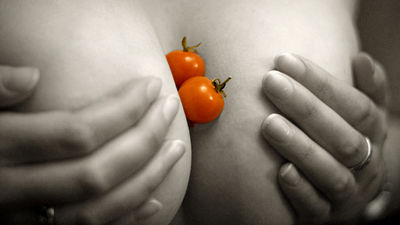Research results show that women who have just given birth are more likely to experience the ``pareidolia phenomenon'' in which unrelated patterns appear on their faces

by
A psychological phenomenon called `` pareidolia '' is similar to imagining a human face in the shape of a chaotic cloud. A research team from the University of Queensland and the University of the Sunshine Coast has announced that women who have just given birth are more likely to experience pareidolia, which involves imagining a face even though it doesn't actually exist.
Preliminary evidence of an increased susceptibility to face pareidolia in postpartum women | Biology Letters
https://royalsocietypublishing.org/doi/10.1098/rsbl.2023.0126

Women May See More Illusory Faces After Childbirth, Study Finds : ScienceAlert

The reason new mothers see faces in inanimate objects
Previous studies have reported that patients with dementia and Parkinson's disease are more likely to experience pareidolia.
Research has also shown that administering artificial oxytocin to humans can increase their sensitivity to various facial signals, such as the eyes and nose.
Therefore, the research team investigated the phenomenon of pareidolia in women immediately after giving birth, when the amount of oxytocin in the body peaks.

In an experiment conducted on more than 400 women, participants were presented with 320 images that could potentially look like human faces. The subjects then completed a questionnaire on an 11-point scale ranging from 0 (it doesn't look like a face at all) to 10 (it definitely looks like a face).
The research team divided the obtained data into three categories: ``women who have just given birth,'' ``pregnant women,'' and ``women who have never been pregnant.'' The results showed that women who had just given birth in the past year were more likely to say that it was visible on their faces than women who had never been pregnant or women who were pregnant.
Below are the scores for the images presented and the subjects' responses, as reported by the research team. In the pinch hanger image at the bottom left, the average score for all subjects was 0.79, and the average score for ``pregnant women'' was 0.45, while the average score for ``women who have just given birth'' was 1.09, indicating that they are prone to pareidolia. has been reported.

Research team member Jessica Taubert said, ``This experiment revealed that women who have just given birth are more likely to experience pareidolia than pregnant women.'' Furthermore, ``It has been suggested that increased sensitivity during the early stages of child-rearing may strengthen the social bond between mother and child.''
The research team also said, ``The data collected show that our sensitivity to patterns visible on faces varies.The amount of oxytocin may change how pareidolia occurs throughout adulthood.'' 'There is a need for further research.'
Related Posts:
in Science, Posted by log1r_ut







